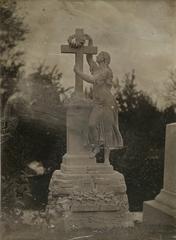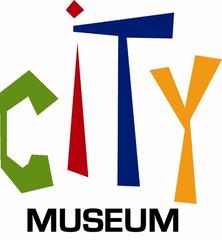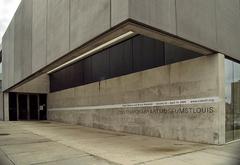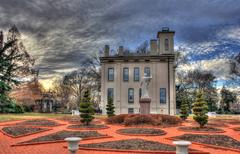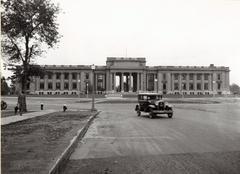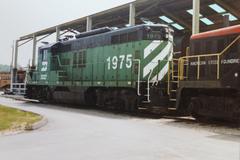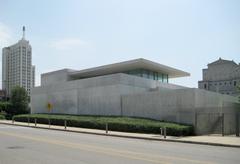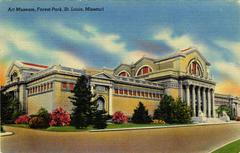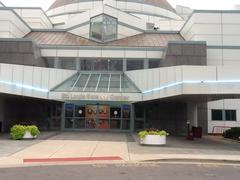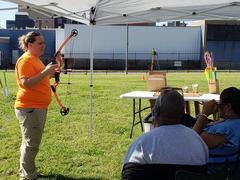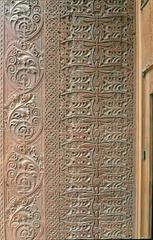
St. Louis Arena: Visiting Hours, Tickets, and Guide to St. Louis Historical Sites
Date: 03/07/2025
Introduction
The St. Louis Arena, once a vibrant epicenter for sports, music, and community gatherings, occupies an enduring place in the city’s cultural and architectural history. Opened in 1929 and demolished in 1999, the Arena was renowned for its pioneering lamella roof design and its role as home to the NHL’s St. Louis Blues, as well as countless legendary concerts and events. Although the original structure is gone, its legacy lives on through commemorative markers, museum exhibits, and the redevelopment of its site into The Highlands district. This guide provides essential information for history enthusiasts and visitors, including details about the Arena’s historical significance, accessibility, ticketing for nearby attractions, and tips for exploring the surrounding area (St. Louis Public Radio, Arch Demolition, Enterprise Center).
Table of Contents
- Introduction
- Historical Overview of the St. Louis Arena
- Economic and Urban Impact
- Demolition and Engineering Significance
- Visiting the Arena Legacy Today
- Modern Arena: Enterprise Center
- Frequently Asked Questions (FAQ)
- Conclusion and Recommendations
- References and Further Reading
Historical Overview of the St. Louis Arena
Origins and Construction
The St. Louis Arena was conceived in the late 1920s to fill the void left by the demolition of the Exposition and Music Hall. Funded by local businessmen and managed by the National Exposition Company, the Arena was designed by Gustel R. Kiewitt and featured a revolutionary lamella roof—an interlocking grid system of Douglas fir beams supported by steel trusses. This engineering innovation eliminated internal pillars, offering unobstructed sightlines and establishing the Arena as the second-largest indoor venue in the United States at its opening in 1929.
Architectural Significance
Famed for its distinctive checkerboard-patterned dome and castle-like towers, the Arena’s circular design and lamella roof became icons of early 20th-century architecture. The clear-span interior was a marvel of its time, influencing the design of future stadiums across the nation and leaving a lasting architectural legacy in St. Louis, evident in structures such as Ladue Middle School and Lutheran High School South (St. Louis Public Radio).
Cultural and Sporting Legacy
The Arena served as a central hub for St. Louis’s social and cultural life, hosting a diverse range of events: hockey, basketball, boxing, wrestling, concerts, circuses, and community gatherings. It was home to the St. Louis Blues from 1967 to 1994, the St. Louis Hawks (NBA) before their relocation, and countless other teams and events. The Arena also welcomed musical legends like The Rolling Stones, Elvis Presley, and Bruce Springsteen, as well as political rallies and citywide celebrations (Rock Tour Database). Its steep seating and lively crowds created an electric, intimate atmosphere that left lasting memories for generations of St. Louisans.
Economic and Urban Impact
As a major event venue, the Arena attracted visitors from across the region, supporting local businesses and contributing to the city’s economy. Its location at 5700 Oakland Avenue provided accessibility to residents and tourists alike. The debate over its preservation in the 1990s highlighted the challenges of balancing historic value with economic and accessibility demands (St. Louis Public Radio).
Demolition and Engineering Significance
After the departure of the Blues in 1994 and mounting maintenance costs, the Arena was demolished via controlled implosion on February 27, 1999. The demolition required precise engineering to safely bring down the lamella roof’s interlocking structure—a testament to its original design ingenuity (Arch Demolition, Spirtas Projects). The event was attended by crowds of residents, many of whom collected pieces of the structure as keepsakes.
Visiting the Arena Legacy Today
The Highlands and Current Site
The Arena’s former site, 5700 Oakland Avenue, is now The Highlands—a mixed-use district with dining, shopping, and entertainment options. Interpretive signage and historical markers are present throughout the area, offering visitors a chance to reflect on the Arena’s storied past.
Nearby Attractions
- Forest Park: One of the nation’s largest urban parks, featuring museums, gardens, a zoo, and walking trails.
- Missouri History Museum: Offers exhibits on St. Louis’s sporting and cultural history, with occasional features on the Arena.
- St. Louis Sports Hall of Fame: Dedicated to celebrating the city’s sports legacy, including memorabilia and stories from the Arena era.
- St. Louis Historical Society: Provides resources, archives, and guided tours focusing on the city’s architectural and cultural evolution.
Guided Tours and Visitor Tips
- Guided Tours: While there are no official tours of the Arena site, several local historical societies and tour companies offer walks that include stories of the Arena and its surrounding neighborhood.
- Accessibility: The Highlands and Forest Park are accessible by public transit (MetroLink and MetroBus) and offer ample parking.
- Best Time to Visit: Spring through fall is recommended for comfortable weather.
- Tickets: There are no tickets required for visiting The Highlands or viewing historical markers; tickets may be needed for nearby museum exhibits or guided tours.
Modern Arena: Enterprise Center
Visiting Hours and Ticketing
The Enterprise Center, built in 1994 to replace the original Arena, is now the heart of St. Louis sports and entertainment:
- Visiting Hours: Typically 10:00 AM to 7:00 PM on non-event days; hours may vary for events (Enterprise Center).
- Tickets: Purchase through the official ticketing portal or authorized sellers. Advance purchase is recommended for popular events.
Accessibility and Amenities
- Public Transit: MetroLink light rail and MetroBus routes serve the area.
- Parking: Pre-book parking or use nearby garages, especially during major events (The Tourist Checklist).
- ADA Accessibility: The Enterprise Center is ADA-compliant, with accessible seating, entrances, and restrooms (Arena Guide).
- Concessions: Offers a variety of dining options, including local specialties and dietary accommodations.
- Merchandise: Official St. Louis Blues and event merchandise are available throughout the concourses.
Safety and Security
- Security screenings, including metal detectors and bag checks, are standard.
- Prefer well-lit routes and rideshare options for night events (Family Vacation Guide).
Sustainability and Modern Features
- The Enterprise Center features energy-efficient lighting, recycling, and water-saving efforts, along with digital ticketing and cashless payments (Arena Guide).
Frequently Asked Questions (FAQ)
Q: Can I visit the original St. Louis Arena today?
A: The original Arena was demolished in 1999. The site is now The Highlands, where historical markers commemorate its history.
Q: Are there tours of the Arena site?
A: While there are no official tours of the former Arena, local historical societies offer walking tours that include the site.
Q: What are the visiting hours for The Highlands?
A: The Highlands is open daily, with most businesses operating from 10 AM to 10 PM.
Q: Where can I see memorabilia from the Arena?
A: The St. Louis Sports Hall of Fame and Missouri History Museum occasionally display Arena-related exhibits.
Q: How can I attend events at the modern arena?
A: Visit the Enterprise Center website to view the event calendar and purchase tickets.
Conclusion and Recommendations
The St. Louis Arena’s influence endures through its lasting imprint on the city’s identity, sports culture, and architectural innovation. Today, visitors can honor this legacy by exploring The Highlands, engaging with nearby museums, and participating in guided tours. With ongoing redevelopment projects and a thriving downtown arena district, St. Louis continues to celebrate its rich past while embracing the future. For the most up-to-date information on events, historical exhibits, and travel tips, download the Audiala app and connect with local cultural resources.
References and Further Reading
- St. Louis Sports Hall of Fame
- St. Louis Public Radio
- Arch Demolition: St. Louis Arena Demolition
- Enterprise Center
- Spirtas Projects: St. Louis Arena
- Forest Park Forever
- St. Louis Historical Society
- Nomadasaurus
- The Tourist Checklist
- Family Vacation Guide
- Arena Guide
For images, consider historical photos of the Arena’s checkerboard dome, demolition day, and current views of The Highlands. Maps highlighting the former location and nearby attractions are also helpful for visitors.





